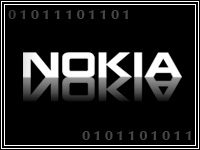
Chipmaker ARM has announced a tiny product with huge implications. The company unveiled its ARM Cortex M0+, a 1mm microchip it says can push the edge of the Internet beyond your laptop or PC. Everything is on the drawing board — from a network-enabled fridge to devices powered by your body’s heat.
“The main advantage is a balance between energy and performance,” Thomas Ensergueix, ARM’s CPU product manager, told TechNewsWorld. The new 32-bit processor consumes about one-third of the energy used by current 8-bit and 16-bit processors while at the same time delivering better performance.
The reduced energy usage is made possible by shrinking the number of transistors needed for the chip and eliminating a step required for data to travel. By shrinking the size of the chip, the cost to manufacturers also falls, Ensergueix said. Freescale and NXP Semiconductor are already among early licensees of the new product.
Flyweight Chip Advances
In the past, small processors — referred to as “flyweight chips” — have required batteries for power and held little intelligence. Used in situations such as industrial sensors, the micro CPUs required battery changes, since they stayed constantly powered.
ARM’s new chip, however, “makes it realistic to control LED light and sensors” which are intelligent enough to power down when unneeded, opening the prospect of little energy leakage, Gary Atkinson, ARM’s head of embedded segments, told TechNewsWorld.
ARM decided to base the Cortex M0+ on the standard 90mn chip manufacturing process to hold down costs, suggested Gartner Wireless Research Director Mark Hung. The move was made despite the 90mn format being “known to have power leakage issues,” he told TechNewsWorld.
50 Billion Devices Forecast
Cisco believes about 50 billion connected devices are possible, UBS analyst Gareth Jenkins told TechNewsWorld. “Most of these are totally new markets and so far have not needed microprocessors sitting alongside them. As they connect and need to process — e.g. remote diagnostics sitting under a stroke victim’s skin — they will need microprocessors,” he said.
The horsepower increase and consumption decrease makes possible what ARM calls the “Internet of Things,” wherein chips allow everything from your TV to your MP3 player to be online. But that ubiquity “requires extremely low-cost, low-power processors that can deliver good performance,” said Tom R. Halfhill, analyst with The Linley Group and senior editor of Microprocessor Report.
Examples of an Internet of Things include “cars networked to each other, the fridge connected to the TV remote, ” Jenkins told TechNewsWorld. However, Atkins sees other uses where reliability, size and power consumption are key. The device may be used in battery-operated body sensors, wirelessly connected to health monitoring equipment, according to ARM. Current microchips lack the intelligence for such tasks, the company contended.
Solar-Powered Medical Devices?
Although only in the conceptual stage, ARM foresees its chip promoting “energy harvesting.” The company envisions chips that convert a body’s motion, natural sunlight, or even ambient temperature into energy.
Although we see rudimentary devices now recharging smartphones via solar panels or radios powered by a walker’s motion, miniature chips such as the Cortex M0+ could do much more. In one case, glaucoma patients could have a sensor in their eye, the battery powered by the photons passing through it, Atkinson foretold.














































